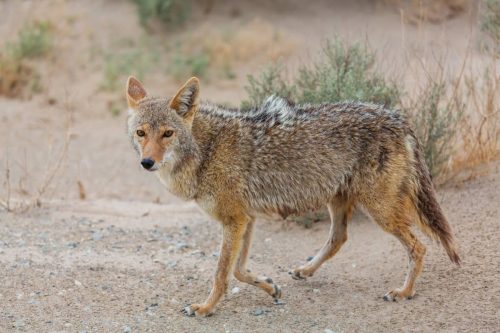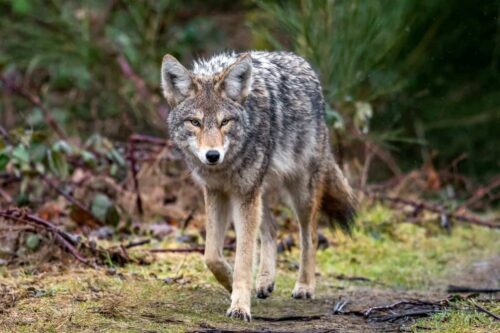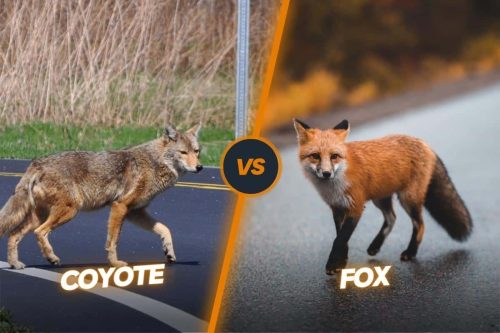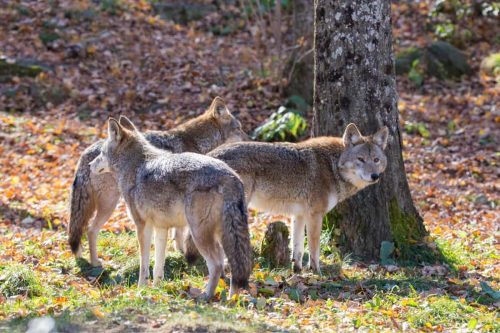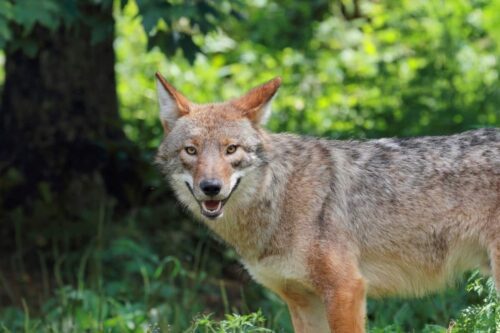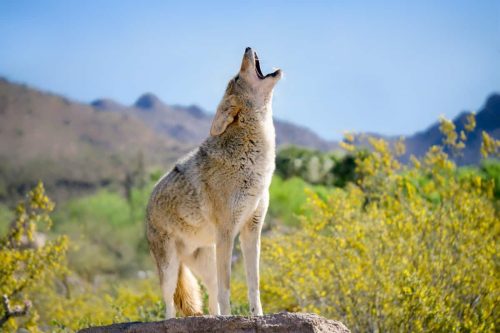Coyote Adaptations from Desert To Urban Areas
Coyotes are among the most well-known wild animals of the North American continent. They have settled themselves in the region in such a way that they are quite good in terms of their adaptability, versatility, and agility. Coyotes have evolved several adaptations that enable them to thrive in a variety of habitats and ecological niches. It is only due to their highly adaptable nature that they have been able to survive thousands of years in the wilderness, in the areas like forests, mountains, deserts, etc.
Coyotes are also excellent in terms of their hearing, smelling, and visionary senses. These senses are highly helpful in hunting down prey and maintaining their dietary patterns. In this article, we are going to review coyote adaptations in detail to let you know everything they do for their long-term survival.
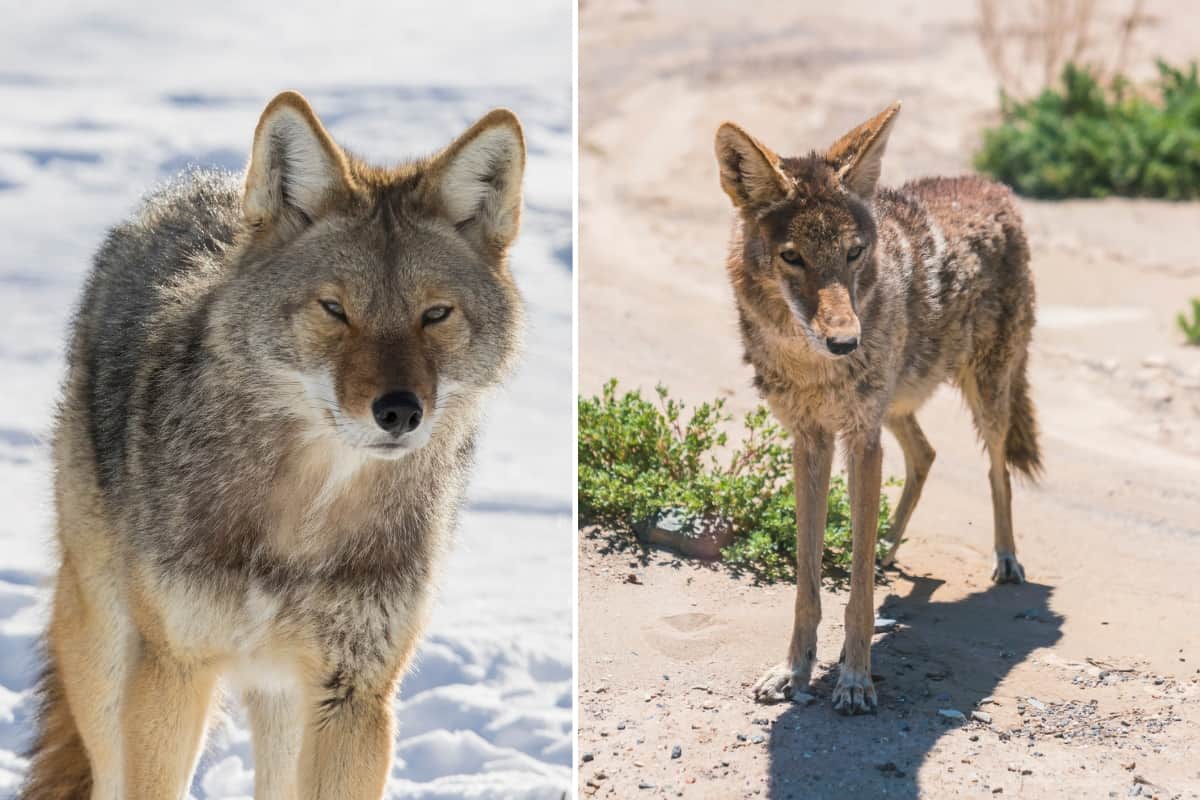
Contents
Coyote adaptations
Coyotes come with a variety of adaptation that greatly helps them for surviving in the wilderness. Let’s have a look at some of the unique adaptations of a coyote.
Thick coat of fur
One of the most important adaptations of coyotes is their thick coat of fur, which provides them with several benefits. First of all, the dense fur acts as insulation, helping them regulate their body temperature in winter weather conditions. The fur coloration of coyotes, typically grayish-brown with variations across different regions, greatly helps them in blending into their surroundings.
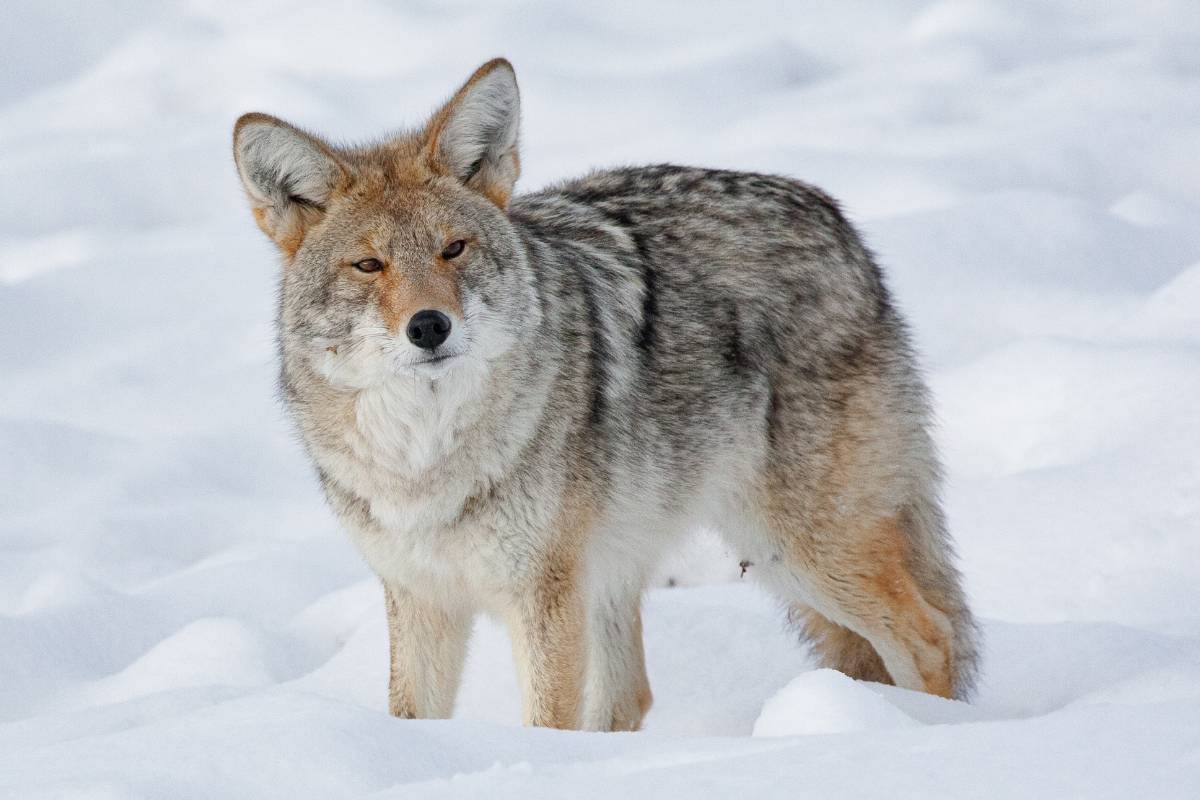
The dense fur of coyotes also gives them a certain degree of protection against physical elements and potential threats. Moreover, the fur of coyotes has some natural water-resistant properties. The fur’s outer guard hairs are coarser and water-repellent, which greatly helps in keeping the underlying fur and skin relatively dry.
Versatile diet of the coyote
Coyotes are known for their versatile diet, which is a key adaptation that contributes to their ecological success. Coyotes primarily feed on small mammals, such as rabbits, rodents (mice, voles, squirrels), and ground-dwelling mammals. Coyotes also include birds in their diet, particularly ground-nesting species and those that are easily accessible. Insects and invertebrates also make up a portion of the coyote’s diet, especially during certain seasons when other food sources are scarce.
They also exhibit some degree of dietary flexibility and consume fruits and vegetation. They may eat berries, melons, apples, and other fruits. Moreover, Coyotes are also scavengers and will readily consume carrion, which includes dead animals they come across. The versatility of their diet allows them to adapt to a variety of habitats and ecological conditions.
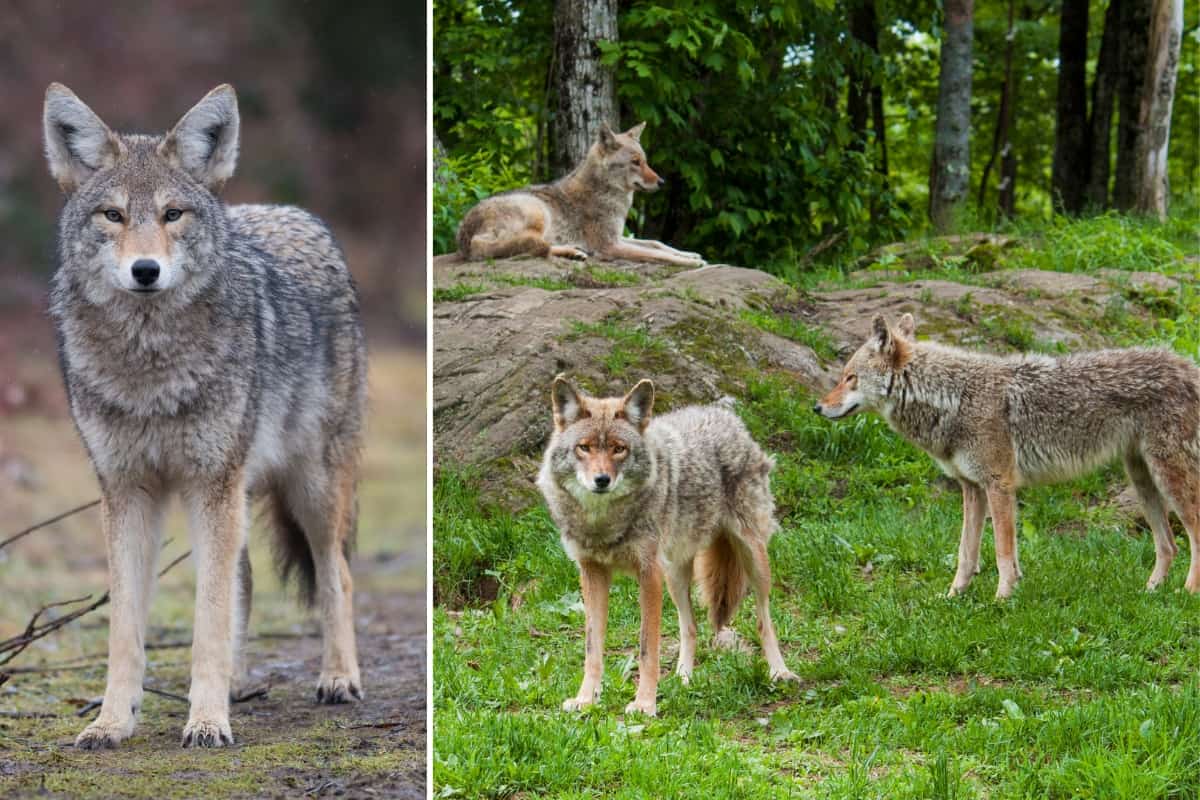
Coyotes exhibit a flexible social structure that can vary depending on factors such as habitat, population density, and resource availability. In some regions, they may exhibit solitary behavior, especially where resources are abundant and territories can support an individual’s needs. Coyotes commonly form monogamous, mated pairs. These pairs work together to defend their territory, raise their young, and hunt for food. They exhibit strong social bonds.
In certain habitats or areas with high population density or where resources are limited, coyotes may exhibit pack-like behavior. Coyotes are also territorial animals, and the social structure revolves around maintaining and defending territories. This flexible social structure plays a very vital role in improving their adaptability.
Excellent senses
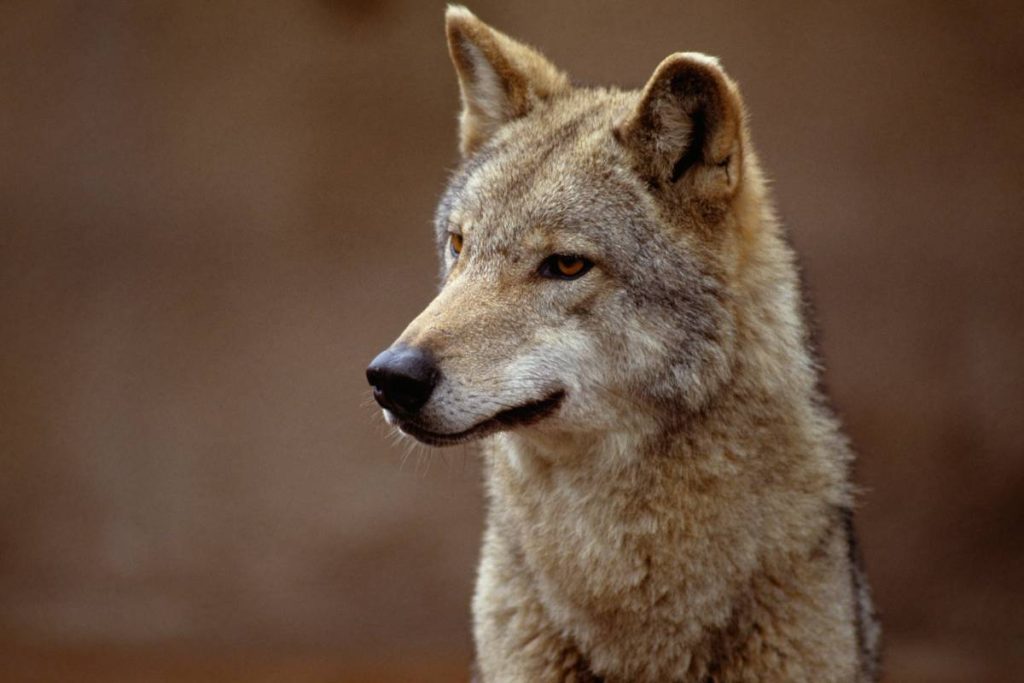
Coyotes come with excellent senses that aid in their survival and hunting abilities. Coyotes have keen vision that allows them to see clearly day and night. The eyes are adapted for detecting movement. This sense helps them locate prey, detect predators, and navigate through tough territories. Moreover, they also have extremely sensitive ears. They can detect high-frequency sounds and can locate prey by listening to their rustling noises or the sounds of animals moving through vegetation. Most importantly, they have an exceptional smell sense. The nose of a coyote can detect and distinguish various scents with great precision. They use their sense of smell to locate prey, identify territorial boundaries, and communicate with other coyotes with the help of scent marking.
Hunting strategies
Being opportunistic predators, coyotes are highly skilled hunters and deploy different hunting strategies depending on the prey and circumstances. They have very good capability of hunting individually, in pairs, or in larger packs, and deploy different kinds of strategies like stalking, chasing, and ambushing. In this regard, they also utilize a lot of their keen senses of hearing, sight, and smell in locating prey.
Nocturnal behavior
Coyotes are primarily nocturnal animals. They are mostly active during the night. The nocturnal behavior of the coyote contributes a lot to their overall adaptability. At nighttime, human activity tends to decrease and this helps them in avoiding direct encounters with humans. Most of the prey species that are part of their diet, such as small mammals and rodents, are also active at night. Being active during the night hours allows them to avoid the heat of the day in regions having very hot climates. They can also avoid diurnal predators, such as larger carnivores that are more active during the daytime. Many potential predators like wolves or cougars, also remain active during the daytime.
Strong body parts
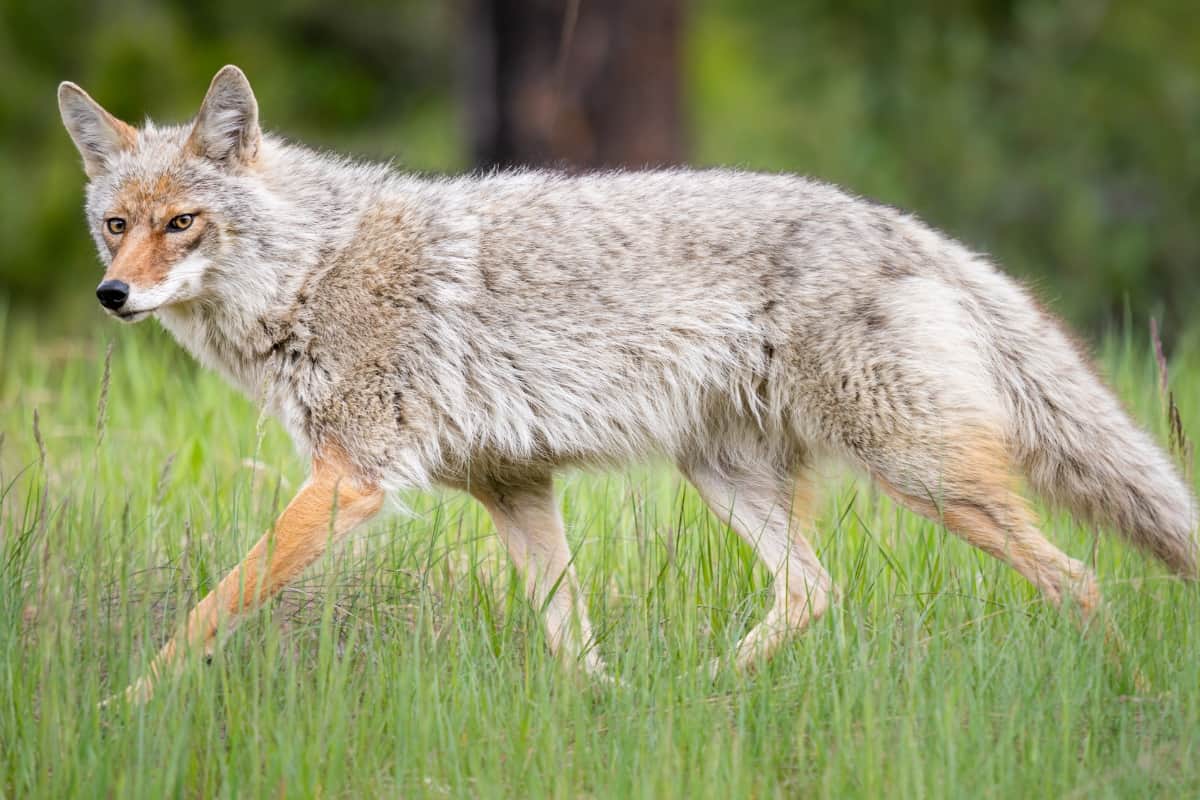
Coyotes have various powerful and strong body parts that contribute to their adaptability. For instance, they have a very lean and agile body structure, which lets them navigate through diverse habitats like forests, grasslands, deserts, and even urban areas. Their agile body can also help them climb trees in times of need. They have very long legs and well-adapted feet. The legs help them in speed and allow them to chase down prey or escape from potential predators. The feet come with strong pads and claws that help them traverse various surfaces like snow and rocky terrain. Coyotes also have very sharp teeth and powerful jaws including sharp incisors for biting and tearing grasping prey and carnassial teeth for shearing flesh.
Diverse range of habitats
Coyotes can easily exist in a wide range of habitats, including forests, grasslands, deserts, mountains, and even urban areas. By having a very flexible diet, they can exploit a variety of food sources available in different ecosystems. Coyotes can also establish and defend territories in a variety of habitats, including areas having low human density or urban landscapes.
Rapid Reproductive Response
Coyotes come with a very short gestation period which is around 60 to 63 days. They can also increase or decrease their litter size and breeding frequency to adapt their population size according to local conditions. This rapid reproductive response helps them thrive in various habitats. In this way, they can adjust their reproductive response according to local environmental conditions, such as food availability and population density.
Intelligence
Coyotes are highly intelligent mammals, and their intelligence also helps them in adaptability. They also possess problem-solving skills, allowing them to find innovative solutions to challenges they encounter in their environment. Coyotes also exhibit a high level of learning ability, enabling them to quickly adapt to new circumstances. They also have a wide range of vocalizations like howls, yips, barks, and growls. Most importantly, coyotes have a remarkable ability to adapt themselves to human-altered environments. They have the ability to exploit resources in urban areas and easily navigate human infrastructure.
Coyote Adaptations in the Desert
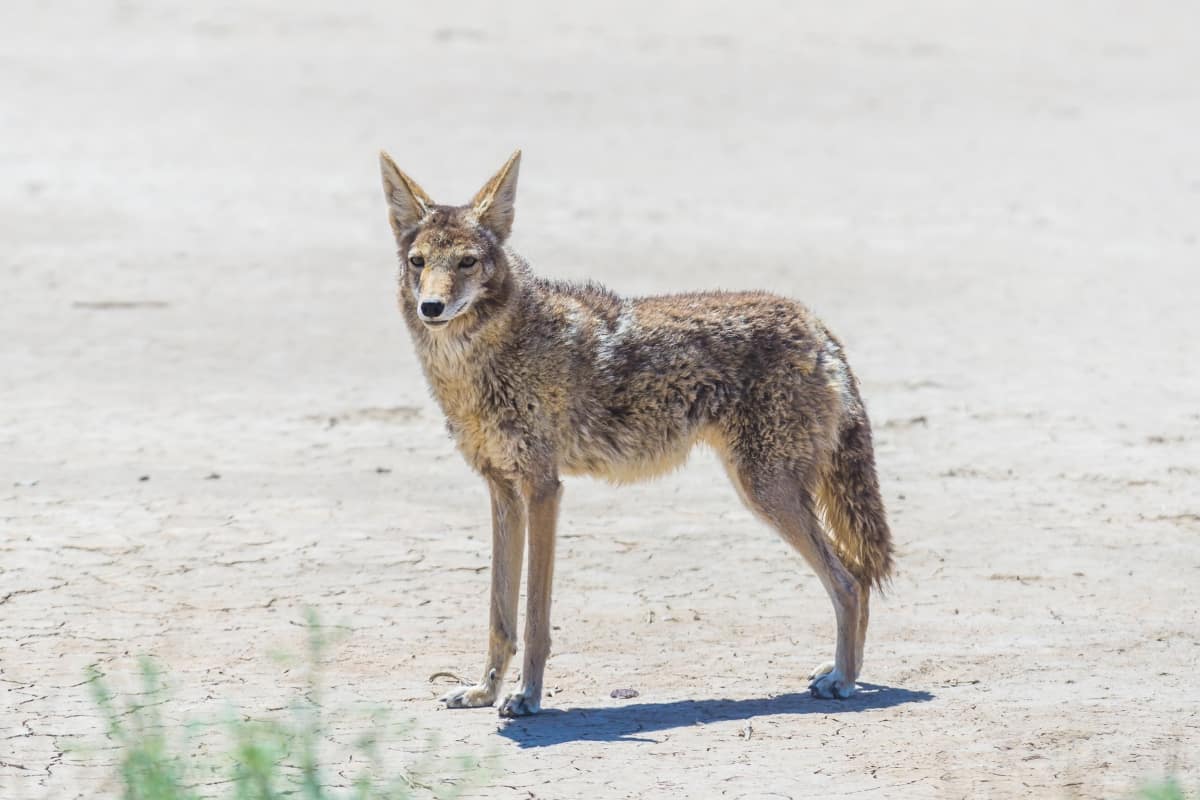
Coyotes have successfully adapted themselves to survive in desert environments. Being nocturnal, they remain active during the cooler nighttime hours and successfully avoid the extreme heat of the day. Coyote has also evolved several adaptations to cope with water scarcity. They can fulfill most of their water requirements from their prey. They adopt a very low metabolic rate which helps them to conserve energy and endure many days with limited food availability. The bodies of the coyotes are also adapted to survive on less nutritious food sources found in desert ecosystems.
What do desert coyotes eat?
Coyotes in the desert feed on a variety of small mammals, such as desert cottontails, kangaroo rats, pocket mice, ground squirrels, and mice. They can also rely on desert reptiles, like lizards, snakes, and small tortoises. They also consume a range of insects, including grasshoppers, beetles, crickets, and scorpions. Moreover, Desert-dwelling birds, such as quails, doves, and ground-nesting birds, are also part of their diet. Coyotes in the desert may also supplement their diet with fruits, berries, and other plant matter.
Conclusion
Coyotes are remarkable wild creatures that have demonstrated exceptional adaptability in a variety of environments, including deserts. This extraordinary adaptation ability enables them to thrive in very challenging conditions and utilize their available resources very efficiently. They can easily cope with water scarcity, extreme temperatures, and limited food availability. Moreover, they can also adjust their metabolism in such a way that they can easily survive in arid environments. Coyote adaptations also extend beyond physical attributes to their social intelligence, problem-solving skills, and their extraordinary ability to coexist with human-altered landscapes.

Izzy is an experienced ranch worker who has a passion for exploring nature and getting up close to wildlife. With her connections to various animal organizations, Izzy is well-versed in animal care and rehabilitation.

